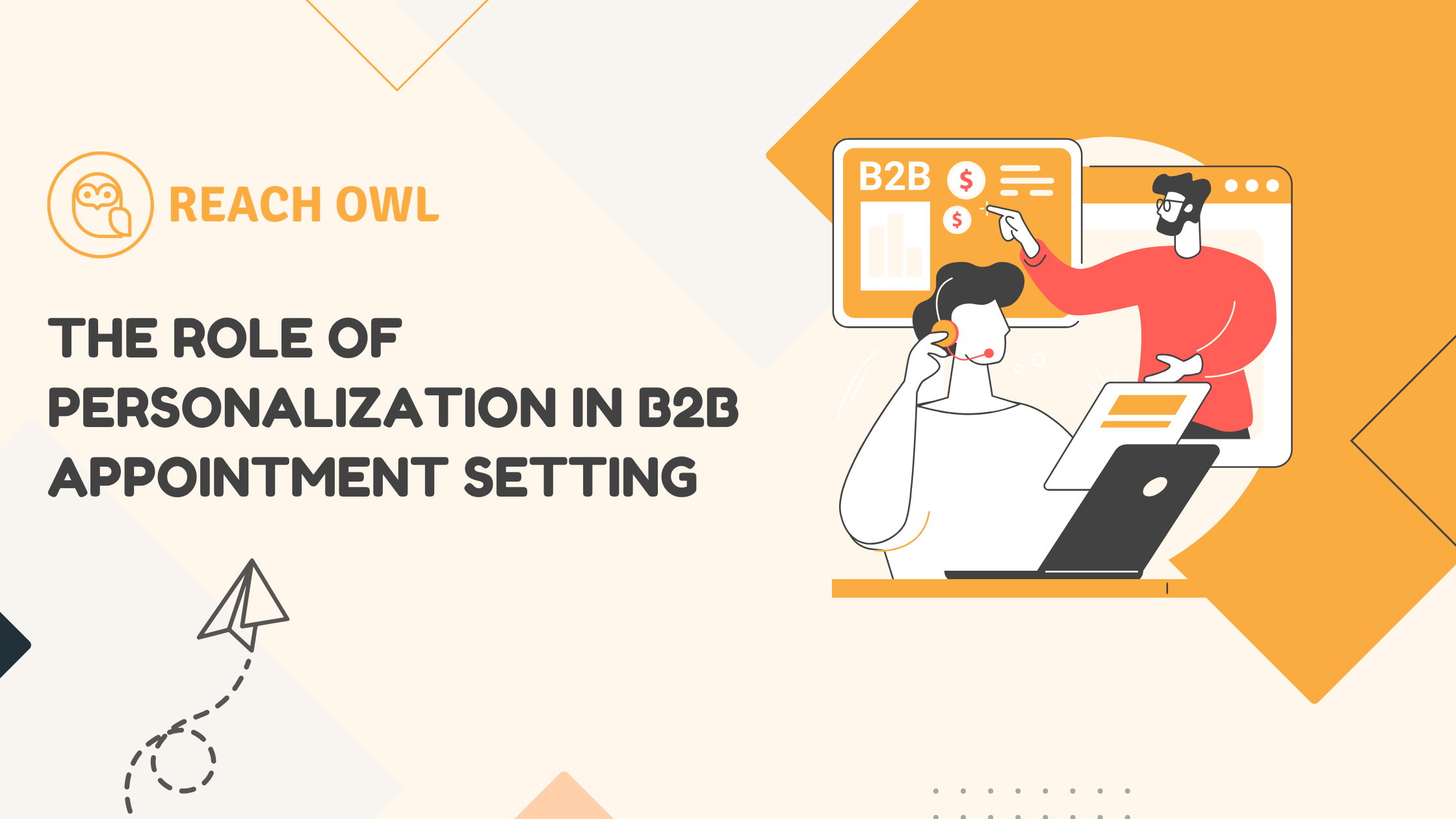Personalization is important in a B2B appointment setting to improve effectiveness, revenue, and market position in today’s competitive business landscape.
B2B appointment setting handles business growth by helping direct communication with future clients for exploring mutually beneficial opportunities, and its effective application is key for long-term success in the marketplace.
Why is B2B appointment setting important for sales and business growth?
1) B2B appointment setting important for businesses in their sales cycle.
2) It efficiently generates high-quality leads by reaching out to targeted prospects
3) Face-to-face or virtual meetings help build trust and rapport with potential clients.
4) B2B appointment setting leads to higher conversion rates compared to cold outreach.
5) It provides a competitive advantage by showcasing personalized communication and an understanding of client needs.
What is the overview of personalization in a B2B appointment setting?
Personalization has become an important factor in B2B appointment setting, enabling businesses to establish meaningful connections with potential clients, increase conversion rates, and gain a competitive edge in the market. By displaying a genuine understanding of a prospect’s unique needs, businesses can foster stronger relationships and drive business growth effectively.
Benefits of Personalization for Both Buyers and Sellers
Personalization in B2B appointment setting benefits for both buyers and sellers in numerous ways:
For Buyers:
1. Enhanced Relevance:
Buyers receive information and solutions that directly address their unique challenges and requirements, saving them time and effort in evaluating options.
2. Better Decision Making:
Tailored communication helps buyers make more informed decisions by providing them with the right information at the right time.
3. Improved Customer Experience:
Personalization, facilitated by tools such as a “customer feedback tool,” creates a positive customer experience, making the buyer feel valued and understood throughout the sales journey.
For Sellers:
1. Increased Engagement:
Personalized communication captures the prospect’s attention and keeps them engaged throughout the sales process, leading to higher response rates and appointment conversions.
2. Stronger Relationships:
Building a relationship on a basis of personalized interactions helps establish trust and credibility, leading to stronger long-term relationships with clients.
3. Shorter Sales Cycles:
By understanding the prospect’s needs and collaborating solutions accordingly, the sales cycle can be shortened as the buyer moves through the decision-making process more efficiently.
4. Higher Conversion Rates:
Personalization leads to higher conversion rates as the tailored approach directly addresses the prospect’s pain points and displays how the offering meets their specific needs.
Key Elements of Personalization in B2B Appointment Setting
Implementing personalization in a B2B appointment setting requires understanding and a strategic approach. Here are some best practices to consider:
1. Data-Driven Approach:
Leverage data and analytics to gain insights into your prospects’ preferences, behaviors, and pain points. Utilize this information to tailor your messages accordingly.
2. Segmentation:
Divide your target audience into segments based on shared characteristics and interests. This allows for more focused and relevant messaging.
3. Craft Compelling Messages:
Develop personalized messages that address the prospect’s specific needs and provide valuable solutions. Highlight the benefits of a meeting and how it can help their business.
4. Preferred Communication Channels:
Respect the communication preferences of your prospects. Reach out to them through channels they are most comfortable with.
5. Automation with Personalization:
While automation tools can be helpful in managing outreach, ensure that personalization is not compromised. Use automation to facilitate personalization, not replace it.
6. Testing and Optimization:
Continuously test and optimize your personalized approaches to improve response rates and appointment conversion rates.
7. Train and Empower Sales Teams:
Train your sales teams to understand the importance of personalization and equip them with the tools and knowledge to implement it effectively.
Overcoming Challenges in Personalization
One of the main challenges in personalization is finding the right balance between automation and maintaining a personal touch in interactions with prospects. While automation can streamline processes and improve efficiency, it should not come at the cost of losing the human element. Here’s how to overcome this challenge:
1. Segmenting Prospects:
Use data and CRM systems to segment prospects based on their preferences and engagement levels. Tailor the degree of automation based on the segment, with high-value prospects receiving more personalized attention.
2. Customized Messaging:
Create automated communication templates that can be personalized with prospect-specific information. Address prospects by their names and mention relevant details to add a personal touch.
3. Personalized Follow-ups:
After an automated initial outreach, follow up with personalized messages that acknowledge previous interactions and address specific needs.
4. Human Interaction for Important Milestones:
For critical touchpoints in the sales process, such as closing deals or resolving complex issues, ensure that there is direct human interaction to build trust and rapport.
Conclusion
Personalization is a powerful tool in B2B appointment setting, allowing businesses to build strong relationships and drive sales success. By prioritizing personalization and embracing future trends, companies can stay ahead in the competitive marketplace and achieve their sales and business goals.

